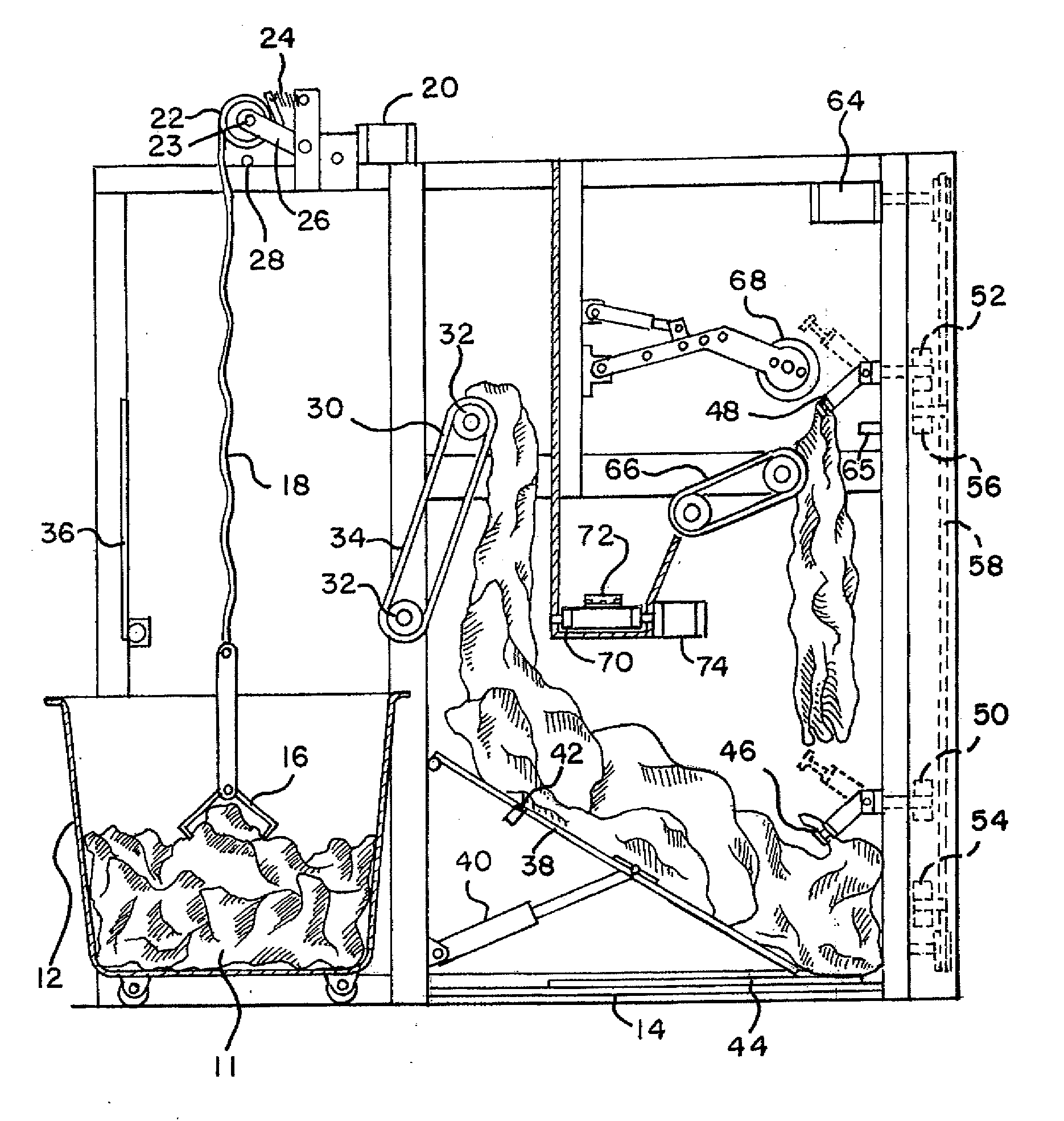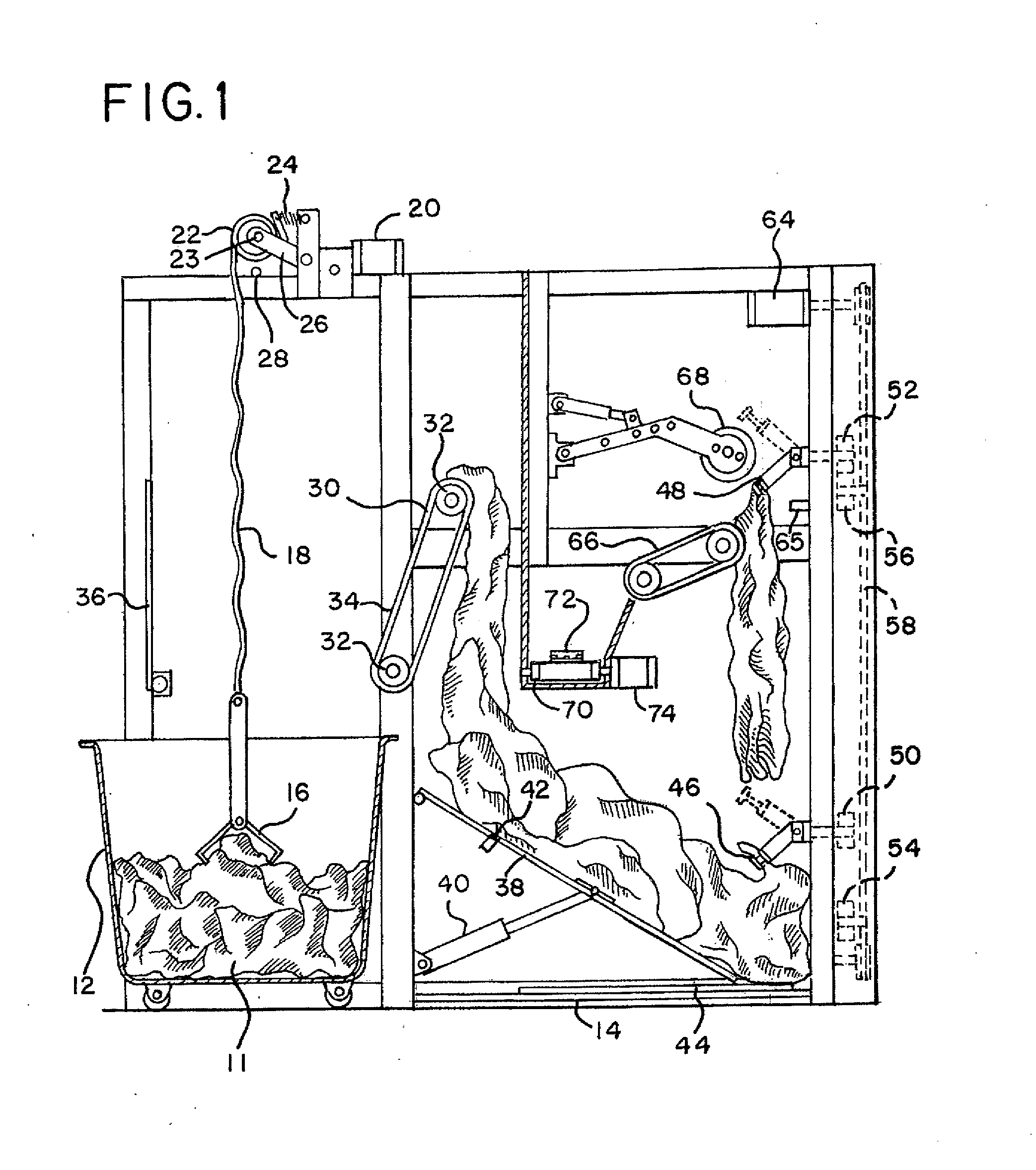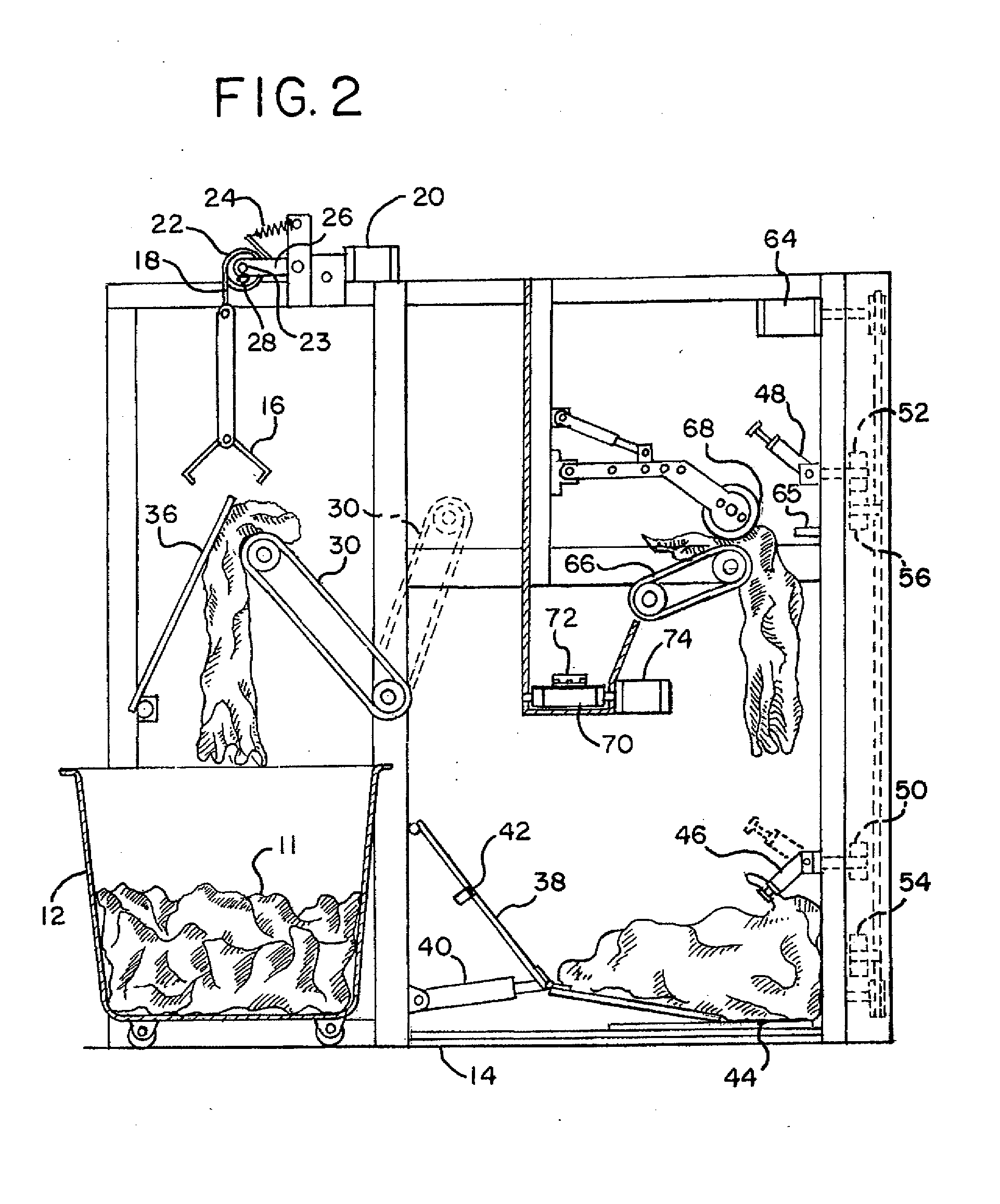Separator for articles of laundry
- Summary
- Abstract
- Description
- Claims
- Application Information
AI Technical Summary
Benefits of technology
Problems solved by technology
Method used
Image
Examples
Embodiment Construction
[0022]FIGS. 1-5 show various aspects of one embodiment of a separator. Various stages and aspects of the embodiment may be altered or changed based on now known or later developed devices or methods. The separator isolates the articles of laundry from a load or bundle of articles. Various stages or aspects may be used in other types of devices, such as spreaders, ironers or folders. For example, the strap for raising and lowering the clamp or the tiltable clamp stages may be used in a spreader.
[0023]The separator described herein is adapted for separating rectangular or square sheets. For example, flannel or cotton sheets in single, double, queen and / or king sizes are processed. A given bundle may include only articles of the same type and size, but may include a mix of types and / or sizes. Larger or smaller articles of laundry may also be processed, such as blankets, comforters, towels, pillow cases, pillow shams, or other laundry articles. The articles are wet, damp, or dry. For ex...
PUM
 Login to View More
Login to View More Abstract
Description
Claims
Application Information
 Login to View More
Login to View More - R&D
- Intellectual Property
- Life Sciences
- Materials
- Tech Scout
- Unparalleled Data Quality
- Higher Quality Content
- 60% Fewer Hallucinations
Browse by: Latest US Patents, China's latest patents, Technical Efficacy Thesaurus, Application Domain, Technology Topic, Popular Technical Reports.
© 2025 PatSnap. All rights reserved.Legal|Privacy policy|Modern Slavery Act Transparency Statement|Sitemap|About US| Contact US: help@patsnap.com



